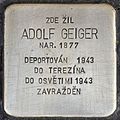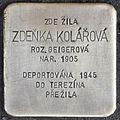
The Stolpersteine in Prague-Josefov lists the Stolpersteine in the town quarter Josefov of Prague, the former Jewish quarter of the city. Stolpersteine is the German name for stumbling blocks collocated all over Europe by German artist Gunter Demnig. They remember the fate of the Nazi victims being murdered, deported, exiled or driven to suicide.

The Stolpersteine in Prague-Vršovice and Modřany lists the Stolpersteine in the town quarters Vršovice and Modřany. Stolpersteine is the German name for stumbling blocks collocated all over Europe by German artist Gunter Demnig. They remember the fate of the Nazi victims being murdered, deported, exiled or driven to suicide.

The Stolpersteine in the Karlovarský kraj lists the Stolpersteine in the Karlovy Vary Region in the westernmost part of Bohemia. Stolpersteine is the German name for stumbling blocks collocated all over Europe by German artist Gunter Demnig. They remember the fate of the Nazi victims being murdered, deported, exiled or driven to suicide.

The Stolpersteine in Prague-Libeň lists the Stolpersteine in the Cadastral area and district Libeň of Prague. The district has been split off. Since 2002 it belongs mainly to Praha 8, but parts of it are now in Praha 7 and Praha 9. Stolpersteine is the German name for stumbling blocks collocated all over Europe by German artist Gunter Demnig. They remember the fate of the Nazi victims being murdered, deported, exiled or driven to suicide.

The Stolpersteine in Prague-Nusle lists the Stolpersteine in the district Nusle of Prague. The district has been split off. Since 2002 it belongs mainly to Praha 4, but parts of it are now in Praha 2. Stolpersteine is the German name for stumbling blocks collocated all over Europe by German artist Gunter Demnig. They remember the fate of the Nazi victims being murdered, deported, exiled or driven to suicide.
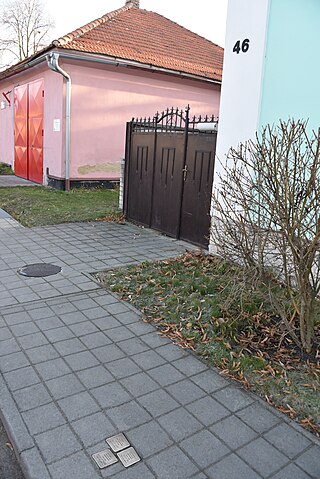
The Stolpersteine in Ratenice lists the Stolpersteine in Ratenice in the Central Bohemian Region, the central part of Bohemia. Stolpersteine is the German name for stumbling blocks collocated all over Europe by German artist Gunter Demnig. They remember the fate of the Nazi victims being murdered, deported, exiled or driven to suicide.

This is a list of Stolpersteine in the Holešovice district of Prague. Stolpersteine is the German name for stumbling blocks collocated all over Europe by German artist Gunter Demnig. They commemorate the fate of the Nazi victims who were murdered, deported, exiled or driven to suicide.
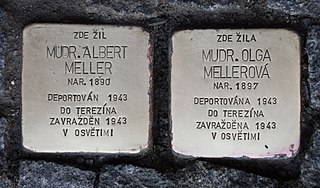
The Stolpersteine in the Pardubický lists the Stolpersteine in the Pardubice Region in the east of Bohemia. Stolpersteine is the German name for stumbling blocks collocated all over Europe by German artist Gunter Demnig. They remember the fate of the Nazi victims being murdered, deported, exiled or driven to suicide.
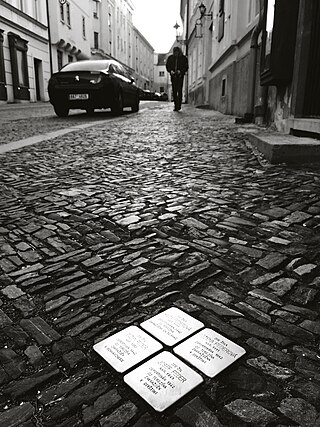
The Stolpersteine in Kolín lists the Stolpersteine in the town of Kolín in the Central Bohemian Region. Stolpersteine is the German name for stumbling blocks collocated all over Europe by German artist Gunter Demnig. They remember the fate of the Nazi victims being murdered, deported, exiled or driven to suicide.

The Stolpersteine in the Moravskoslezský kraj lists the Stolpersteine in the Moravian-Silesian Region in the easternmost part of Moravia. Stolpersteine is the German name for stumbling blocks collocated all over Europe by German artist Gunter Demnig. They remember the fate of the Nazi victims being murdered, deported, exiled or driven to suicide.
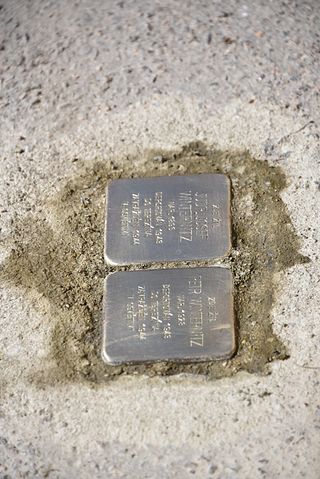
The Stolpersteine in Prague-Smíchov lists the Stolpersteine in the district Smíchov of Prague. Since 2002, the district belongs to Praha 5. Stolpersteine is the German name for stumbling blocks collocated all over Europe by German artist Gunter Demnig. They remember the fate of the Nazi victims being murdered, deported, exiled or driven to suicide.

The Stolpersteine in Prague-Michle lists the Stolpersteine in cadastral area Michle of Prague. Since 2002, the district belongs to Praha 4. Stolpersteine is the German name for stumbling blocks collocated all over Europe by German artist Gunter Demnig. They remember the fate of the Nazi victims being murdered, deported, exiled or driven to suicide.

The Stolpersteine in Prague-Podolí lists the Stolpersteine in the district Podolí of Prague. Since 2002, the district belongs to Praha 4. Stolpersteine is the German name for stumbling blocks collocated all over Europe by German artist Gunter Demnig. They remember the fate of the Nazi victims being murdered, deported, exiled or driven to suicide.

The Stolpersteine in Prague-Karlín lists the Stolpersteine in cadastral area Karlín of Prague. Since 2002, the district belongs to Praha 8. Stolpersteine is the German name for stumbling blocks collocated all over Europe by German artist Gunter Demnig. They remember the fate of the Nazi victims being murdered, deported, exiled or driven to suicide.
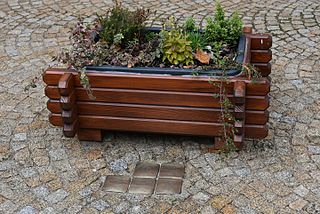
The Stolpersteine in Lomnice u Tišnova lists the Stolpersteine in the town Lomnice in the South Moravian Region. Stolpersteine is the German name for stumbling blocks collocated all over Europe by German artist Gunter Demnig. They remember the fate of the Nazi victims being murdered, deported, exiled or driven to suicide.

The Stolpersteine in Mikulov, Slavkov u Brna and Znojmo lists the Stolpersteine in three towns of the South Moravian Region. Stolpersteine is the German name for stumbling blocks collocated all over Europe by German artist Gunter Demnig. They remember the fate of the Nazi victims being murdered, deported, exiled or driven to suicide.

The Stolpersteine in Tišnov lists the Stolpersteine in the town Tišnov in the South Moravian Region. Stolpersteine is the German name for stumbling blocks collocated all over Europe by German artist Gunter Demnig. They remember the fate of the Nazi victims being murdered, deported, exiled or driven to suicide.

The Stolpersteine in Mladá Boleslav lists the Stolpersteine in the town of Mladá Boleslav in the Central Bohemian Region (Czech: Středočeský kraj. Stolpersteine is the German name for stumbling blocks collocated all over Europe by German artist Gunter Demnig. They remember the fate of the Nazi victims being murdered, deported, exiled or driven to suicide.

The Stolpersteine in Prague-Žižkov lists the Stolpersteine in a cadastral district Žižkov of Prague. The district has been split off. Since 2002 it belongs mainly to Praha 3, but smaller parts belong to Praha 8 and Praha 10. The district is named after Hussite military leader Jan Žižka. Stolpersteine is the German name for stumbling blocks collocated all over Europe by German artist Gunter Demnig. They remember the fate of the Nazi victims being murdered, deported, exiled or driven to suicide.

Stolpersteine is the German name for stumbling blocks collocated all over Europe by German artist Gunter Demnig. They memorialize the fate of the victims of Nazi Germany being murdered, deported, exiled or driven to suicide. The Stolpersteine in Neratovice, a town in the Central Bohemian Region of the present-day Czech Republic, were collocated in 2010.

